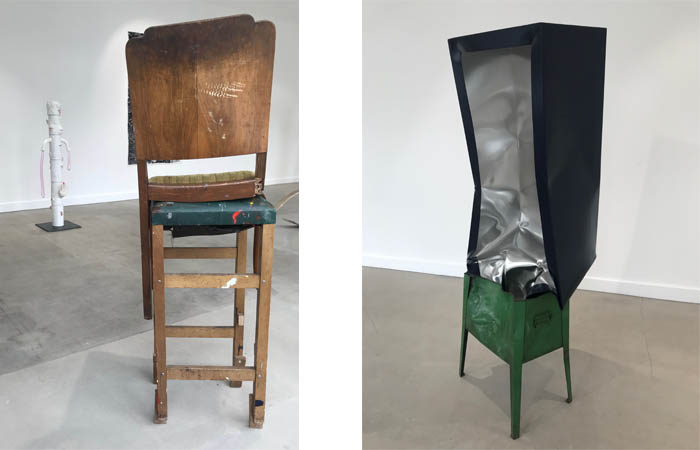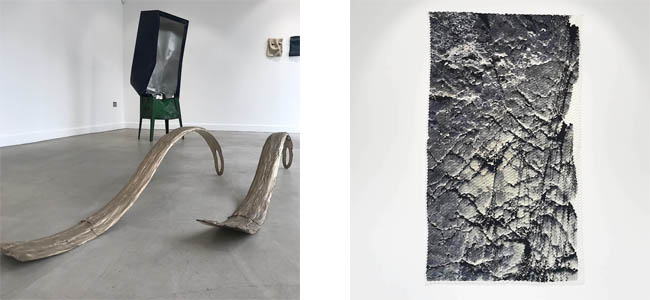The stoical magnificence of the machinery populating the Duveen Galleries underlines the desolation of a lost era.
The pervasive smell of oil, dust and neglect envelops visitors as they gaze at the statuesque machines elevated on plinths of steel and concrete or on ubiquitous workshop drawers. Their levers out of reach, the redundant tools to Jacob Epstein’s statuesque Rock Drill.
A giant rubber tyre laid to rest in an agricultural galvanised steel trough is caught between slumber and escape.
The auction lot numbers and customer reference labels attest to the provenance of these items. They have been rescued from oblivion for a short time by Mike Nelson for visitors recall and mourn a time of thriving industry in Britain.
The orderly curation of the galleries emphasises the heft and presence of the machinery and by association the obsolescence and absence of the redundant workers left behind by progress.
The inclusion of agricultural machinery widens the field of reference to encompass a disappearing way of life. The textile industry in which Nelson’s family worked is also represented. There is a poignant sparkle of sequins hanging by a dusty thread on an impressive braid manufacturing machine.Here and there vibrant touches of colour catch the eye from across the vast spaces. These call to mind Phyllida Barlow’s use of colour in Cul de Sac showing at the Royal Academy.
Mike Nelson’s choice of title signposts his intentions. The inescapable feeling of loss cannot entirely mask the proud magnificence of the machines.
The Asset Strippers is both exhilarating and mournful. This visit to the Duveen Galleries has encouraged me to re-evaluate the context of my current work. While I use handwork skills and obsolete tools, my message is less a lament for times gone by and rather a celebration of materiality and the retrievable nature of skills in an endeavour to mesh and connect with our environment.










